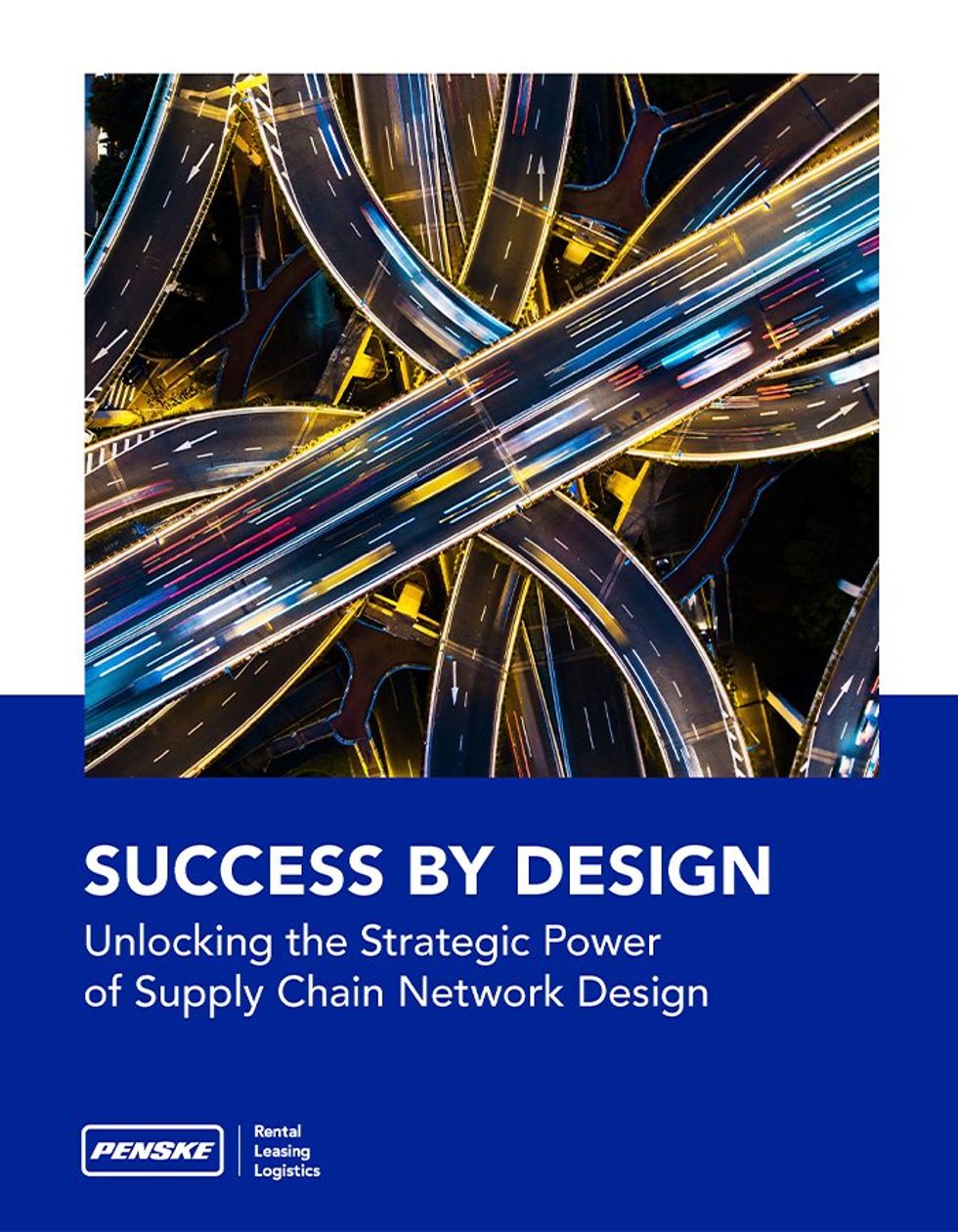The Importance of Network Design
The ongoing need to speed deliveries, reduce risk and improve sustainability while managing expenses drives the need to increase efficiency throughout supply chain networks. Shippers are increasingly focused on resiliency, which means they need to look at the end-to-end supply chain and optimize the entire network.
Improving Overall Network Design
By evaluating the network as a whole — including sourcing locations and product demand — shippers can improve the overall engineering of the supply chain and increase efficiency. "You can look for opportunities to multi-source to avoid the risk associated with being single-sourced, and you want to make sure your sources are close to your customers," said Amy Ilyes, vice president of logistics engineering for Penske Logistics.
When engineering a network design, Penske relies on proprietary and off-the-shelf technology to model its customers' supply chains and find the ideal sourcing, sites, modes and routes.
Engineers run 'what if' scenarios using different ports, routes, alternate suppliers, and varying levels of inventories and modes of transportation. The models help shippers identify which channels should be served by which locations, optimal supplier base locations, the best ports of entry, and where bricks-and-mortar warehouses should be positioned.
"We've worked with customers interested in micro-fulfillment and opened smaller warehouses closer to where the demand points are," Ilyes said, adding that it is also essential to look at the availability of labor, especially warehouse workers and professional drivers, when considering the ideal locations.
Making Transportation More Efficient
By optimizing the network, shippers can eliminate miles, which Ilyes said increases efficiency, frees up capacity and improves the utilization of equipment and drivers. More importantly, it cuts costs.
Logistics costs have risen due to disruptions, inflation and labor shortages. However, effective supply chain network design can uncover hidden savings of 10% to 15%, potentially amounting to millions.
We review its customers' current routing to establish a baseline when analyzing routes. "Then we run an optimization scenario and look at how many fewer miles there are. Because there are fewer miles, drivers will have more hours. Then we develop an optimal schedule and determine the number of drivers, tractors and trailers needed to run the routes," Ilyes said.
Changing business rules could create even more savings opportunities. "Take, for example, retail stores with two-hour delivery windows. If the customer widens that and allows a longer period to make the deliveries, we can usually come up with more efficient routes and increased resource utilization," Ilyes explained.
Another option could be moving to larger equipment. "Maybe right now the routes are run with 48-foot trailers, and there could be an opportunity to go to 53-foot trailers," Ilyes said.
There are also gains to be had by filling empty backhaul miles. "We manage a lot of freight besides our dedicated operations. Usually, when we're putting together any design, our backhaul coordinators help fill empty miles, which is a cost savings opportunity for the shipper," Ilyes said.
The Benefits of Increased Visibility
Visibility into inventory helps shippers make data-driven decisions boosting resiliency and reaction times in the event you need to pivot quickly.
Knowing where inventory is located also ensures that shippers deploy it from the correct location. "You don't want to be shipping an order from California to a customer on the East Coast when there is a distribution center in the East," Ilyes said.
Making Continuous Improvements
Once the model is established, Penske runs alternate scenarios regularly to determine when an update is warranted.
Companies with seasonality tend to look at new scenarios twice a year or even more frequently if there is enough variability in the network to warrant it. Other companies typically review their networks annually.

